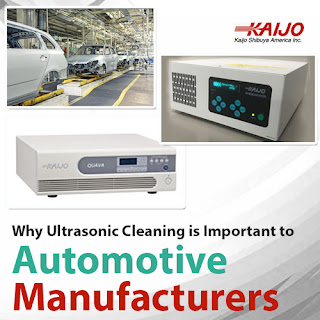Medical equipment used for testing and analysis has to be free from dirt and contamination if the results are to be accurate. Thus, it has to be cleaned thoroughly and to the highest standards, while making sure that the cleaning process would not cause structural damage to them. Commonly used sterilization techniques such as steaming will cause electronics failure, while mechanical scrubbing can damage delicate parts.
That's why specialized medical ultrasonic cleaners are the best solution to remove all surface contaminants quickly and effectively. Ultrasonic cleaning also complements other sanitary medical practices and provides an all-purpose method of cleaning manufactured medical components.
The ultrasonic cleaning method works by the cavitation bubbles created in the cleaning solution from ultrasonic sound waves generated by a medical ultrasonic transducer. The bubbles form in low-pressure areas and collapse at pressure peaks. As the bubbles collapse, they produce a tiny energetic jet of cleaning solution that dislodges surface dirt when it comes in contact with the surface of the part that is being cleaned.
Aside from the correct power, the key to a successful ultrasonic cleaning of medical parts is using the right frequency. Low frequencies generate comparatively large bubbles, high-energy jets, and robust cleaning action. High frequencies, on the other hand, generate smaller bubbles and more gentle cleaning. Depending on the level of surface hardness and the type and level of contamination, users can choose the frequency to clean as quickly as possible without damaging the part surface.
The microscopic cavitation bubbles and the jets that they create are active wherever the cleaning solution is present. That is why they can clean areas that mechanical scrubbing usually cannot reach – complex shapes, dead-end holes, and interior hollows. These jets dislodge and remove all dirt particles and contamination, resulting in a completely clean part surface.
Read the complete article, “Why Medical Equipment Manufacturers Use Ultrasonic Cleaning,” for more details on medical ultrasonic cleaners that Kaijo supplies to the medical manufacturing industry. Contact Kaijo Shibuya at 408-675-5575 or email info@kaijo-shibuya.com to discuss your cleaning requirements.


